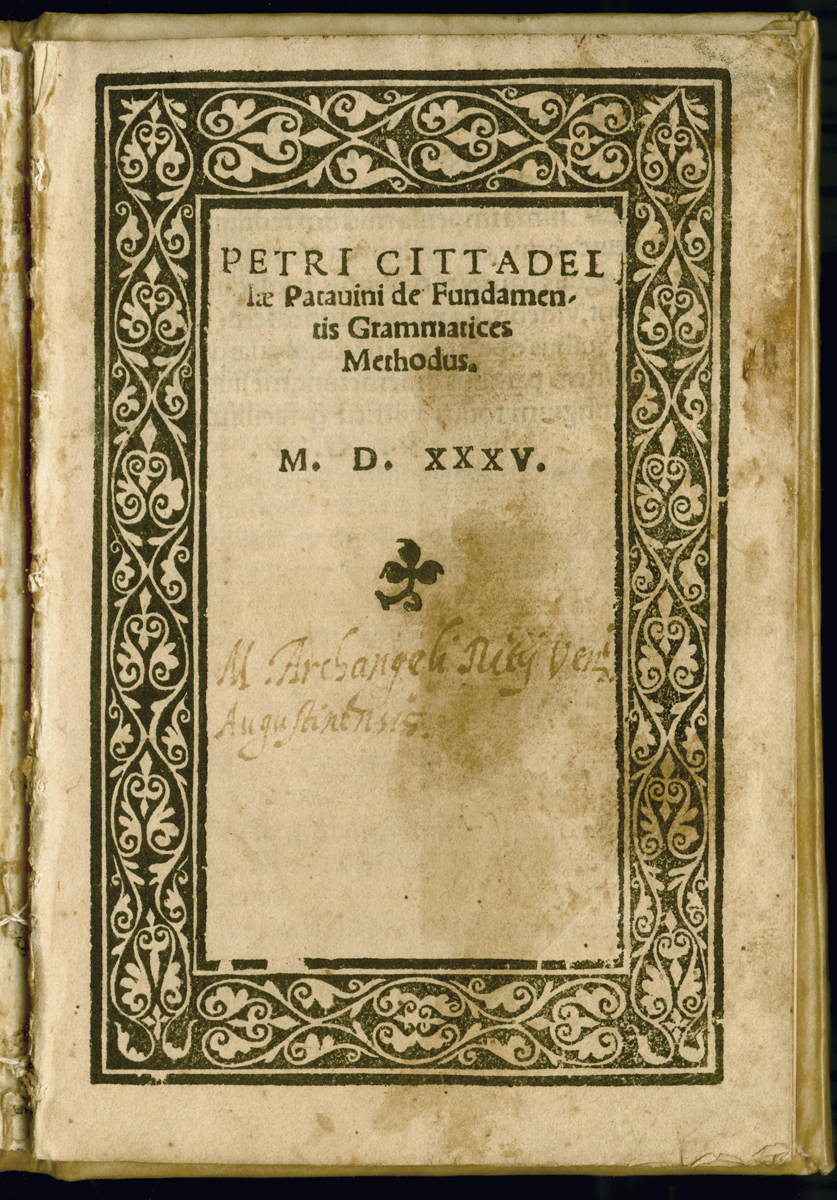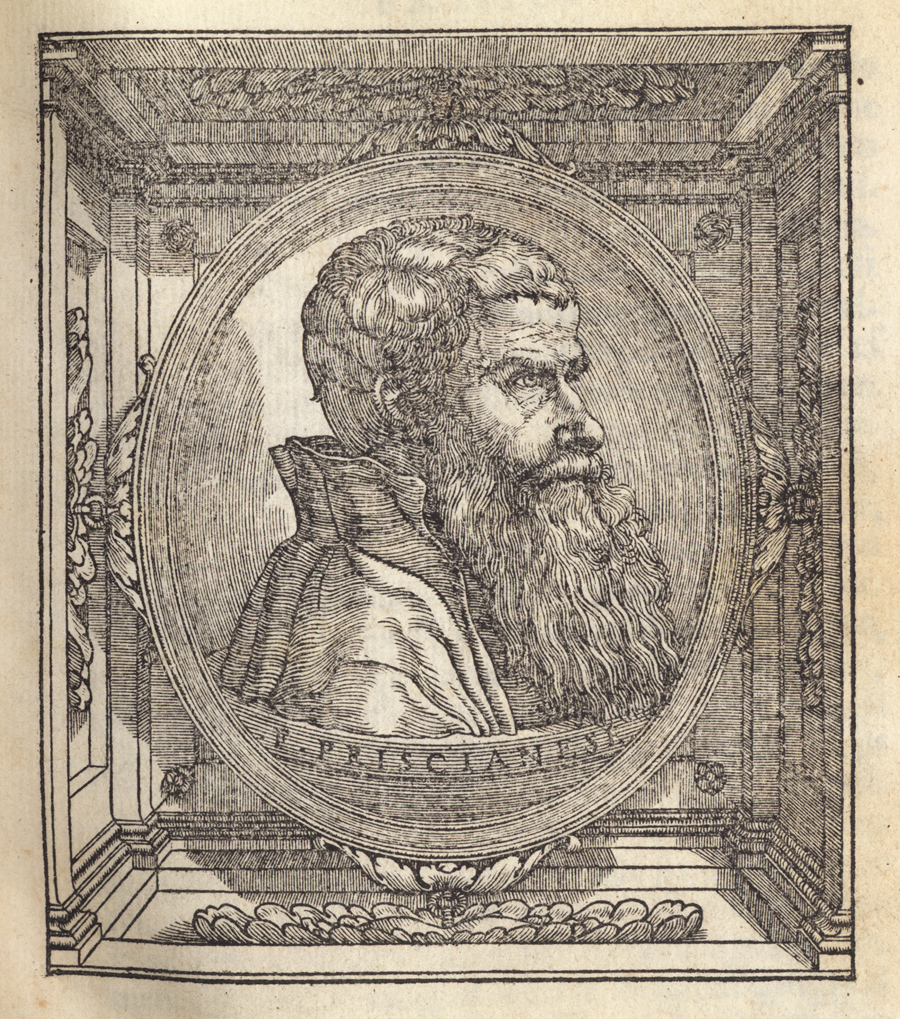2.13 Radical Grammarians

In the fifteen twenties and thirties, other reformers attempted more thorough changes to the basic curriculum. One obscure effort (obscure because few copies of any of his books survive) was that of Pietro Cittadella (d. 1554). A Paduan poet and probably also a schoolteacher, Cittadella authored a grammar in 1535 in which he proposed a question-and-answer teaching system. He gave a fifty-odd concise rules to be memorized, and then proceeded to exercise the students with close explications of short sentences. The sample sentences (each called a thema) were presented in both Latin and Italian so that there would be no doubt as to their meaning. Then the students were quizzed by the teacher in an examen that proceeded through the thema word by word, asking about parts of speech, meanings, inflectional forms, and syntactical relationships. The student was to answer using the descriptive vocabulary of the brief, memorized rules. The book was printed very roughly and inelegantly and its preface promised a fuller treatment in a longer book on the parts of speech (apparently never published). Since Cittadella called his book a methodus, it is possible that he merely intended it for a demonstration piece.
The most radical reformers suggested teaching Latin entirely in Italian. An early exponent was the Veronese humanist Bernardino Donato (1483-1543) whose Grammatica latina in volgare saw a single edition in 1529. It is notable for its front matter where Donato remarked that since arithmetic, astrology, medicine and philosophy could be studied in Italian, it was time to make Latin study available in that form too. He seems to have envisioned a reader who might want to "pick up" some Latin through self-study.

A more successful and influential reformer was Francesco Priscianese. Priscianese does not seem to have started with the intention of replacing the Donat, though he ended up claiming to have done so. His comprehensive descriptive grammar of Latin, composed in standard Tuscan, appeared in 1540. He believed that it would be easier and more agreeable for students to study the ancient language across the entire course if their handbook were written in the modern vernacular. He also opined that bilingual study is of benefit for mastery of both languages, enriching the vernacular by the example of Latin eloquence and making Latin more easily understandable. For realizing these goals in the form of a grammar, he was praised by several members of the Tuscan community in Rome, including Michelangelo Buonarotti. (83) Only in a second moment, Priscianese tells us, did he decide to make an abbreviation of his grammar as a direct substitute for the Donat. Perhaps inevitably, this substitute for the book that Florentines commonly called the Donadello came to be called the Priscianello, a marketing device that pointed out in a word that it was to be used to substitute for the Donat. Its modernity was its selling point. (84)
By 1550, then, there were so many alternatives in print that the grip of the Donat was loosening. Editions of the traditional work continued to appear well into the seventeenth century, but increasingly the Donat stood for an older pedagogy, one resistant to modern teaching methods.
NOTES
- Open Bibliography
- (83) Redig de Campos, 166-168.
- (84) Further on Priscianese, see section 7.10; also Redig de Campos 1938; Ridolfi 1941; Padoan 1978, 371-393;Vignali 1979; Vignali 1980; Jensen 1996a, 67-68.